Welcome to the inaugural edition of the M-Factor, a regular feature of the Natural Running Center that will provide readers with the latest trends and news in the minimalist running world. – Nick Pang and Bill Katovsky
***
So where is minimalism headed? Are we still in the early adopters’ phase? Will we see many more models and brands? In fact, on Saturday, just in time for the Boston Marathon, Vibram, an Italian firm with its United States headquarters in Concord, Massachusetts will open its first U.S. store dedicated to FiveFingers at 292 Newbury St. According to a Vibram press release, the store will feature “test centers, called experiential zones,’ where customers may walk in the unusual footwear, introduced in 2006, across a number of different surfaces including marbles, wood chips, stones and a bumpy yellow safety strip like those that might be used in subways.” It’s been a busy time for Vibram as of late. Last month, a class-action lawsuit was filed (also in Boston) on behalf of a Florida woman who alleges the company’s claims about the benefits of the shoe are “false and deceptive.”
***
“For run specialty retailers, less was definitely more in 2011. Without question, minimalist/barefoot shoes are the biggest story of the year.” So read the opening paragraph of a feature article, “Minimalist 2.0 – The Next Generation of Running Shoes Take Hold,” in the January/February 2012 issue of the shoe trade magazine Footwear Insight.
Citing figures from Leisure Trends Group’s Run Specialty RetailTRAK, the article reported that “minimalist footwear sales totaled $45 million through the end of October 2011, up 153 percent from $18 million during the same period in 2010. Meanwhile, traditional running shoes struggle to maintain sales and share with sales trending down across the first 10 months of 2011.”
And yet it’s to be expected that with any new footwear trend, a lack of consensus among manufacturers can often muddy the waters for runners. Minimalist shoes are a prime example of this happening. Nothing is to stop a company from marketing a shoe as minimalist, when in fact, it might appear anything but when compared to other brands.
***
What is Minimalism?
Here’s a quick summary of the criteria for “minimalism”:
1. Absence of a thick, overbuilt heel-crash pad like that found in a majority of conventional running shoes.
2. Minimal height differential between the sole under the heel and the sole under the forefoot. This downward slope in the sole from heel to forefoot is also known as the drop. Most conventional running shoes have a drop of 10-14mm, whereas minimalist shoes have a drop that is considerably lower. (The most minimal shoes have a completely level sole – no differential at all. This characteristic is often referred to as “zero drop”).
3. Thin sole overall, regardless of heel-forefoot drop. The foot should be able to feel the ground.
4. A flexible sole so the foot bends with the shoe, no matter the running surface – dirt, asphalt, grass, rocky trails.
5. The shoe should be lightweight – less than 10 ounces per shoe is a reasonable benchmark, though many minimalist shoes weigh far less.
6. The footbed should be relatively flat and contain little cushioning or arch support.
7. The toebox should be roomy and non-constricting.
Bottom line: just because an ad or marketing material says a a shoe is minimalist, look under the hood. Too much cushiony support and/or a pronounced heel-toe drop means one thing: caveat emptor.
***
Good news for runners: 2012 will be even bigger and better for less-is-more footwear. Here’s a snapshot of what to expect in the minimalist running shoe category:
Launching late-Summer and early-Fall are some long awaited models but also new and radical minimalist models from some of the biggest running shoe companies.
Natural running company from the UK, Inov-8, is introducing Trailroc, a new range of trail running shoes designed specifically for running on loose, rugged and eroded trails. With three different options of varying cushioning, protection and differential, there is a new Trailroc shoe for every trail runner’s need.
This is the first highly anticipated lightweight trail running shoes from Inov-8 with an anatomical last allowing the runner’s foot to spread and grip the ground, promoting a natural running style and providing protection for long days out on the trails.
There are three shoes in the Trailroc range, each with varying levels of cushioning and differential. So whether it’s a 5k sprint trail race or the Leadville 100, whether the user has a natural running style, or prefers more protection, there is a Trailroc for every trail runner: Trailroc 255 with 6mm; Trailroc 245 with 3mm, and Trailroc 235 with 0mm differential.
Skechers smartly moved away from hawking “toning shoes” (being hit with a government fine and lawsuits has a tendency to do that in the boardroom). It seems to have success with its launch of GOrun last year, and with elite endorser and U.S. Olympics Marathon Trial winner Meb Keflezighi running in a modified version of the GOrun, this shoe, the GObionic, weighs 6.6 ounces, zero drop, 10mm stack height without the insole, and super-flexible —might be a commercial hit. The price is also right at $90.
Skechers newest GObionic running shoe will blow your mind (or feet) away. Early reports on the latest prototypes indicate a blockbuster in the making. Here’s Nick’s take: “After a couple of runs (on asphalt, concrete, trails, and mud) and many long walks in them, I agree. It has all the desired features of a true minimalist running shoe (extra wide toe box, lightweight, super-flexible longitudinally (front to back) and transversely (side to side), and sockless wear.”
Adidas will be launching the AdiPure minimalist running shoes with three models: Adapt, Motion, and Gazelle. They will have varying heel-to-toe differentials and cushioning for the broad spectrum of runners. The lowest to the ground model, Adapt, has a 4mm differential, while the middle model Gazelle has a 7mm differential, and the Motion has a 11mm differential. The Adapt has a stack height of less than 9mm.
There is some similarity between the Skechers GObionic outsole and Adidas Adipure outsole. If the Adapt outsole is anything like the GObionic, runners will be very happy indeed. Stay tuned.
Mizuno is resurrecting an ancient Japanese approach to activate and strengthen the foot and leg muscles. The Be barefoot training shoe has been introduced in Japan and may be modified for the U.S. The Mizuno Be shoe is to be worn walking and it forces your foot to grab the ground with your toes so your dormant foot muscles are exercised and strengthened over time. The shoe does not put any undue strain on your feet and but may feel uncomfortable initially from muscle soreness.
The shoes loosely borrow from the Waraji which are sandals made from straw rope worn by samurai and foot soldiers in feudal Japan. Traditionally, the Japanese wear the waraji with their toes protruding slightly over the front edge.
Many cultural aspects of Japan (like the split-toe or tabi shoe) don’t usually transfer successfully to the West but Mizuno has packaged it into a westernized training shoe with a minimal and traditional look. And if the benefits are easily quantifiable by the shoe wearer, it will certainly catch on. What did you think of the first Vibram FiveFingers shoe you saw? Time will tell for Be.
***
For in-depth reviews of minimalist shoes, go here to the Natural Running Center’s shoe review section, or head over to Nick Pang’s popular site, Minimalist Running Shoes.


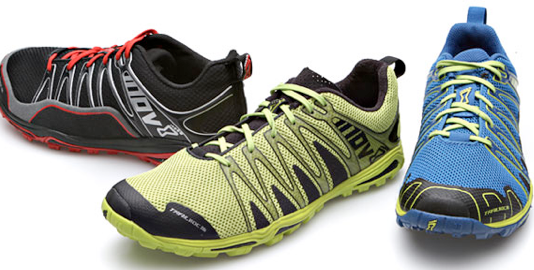

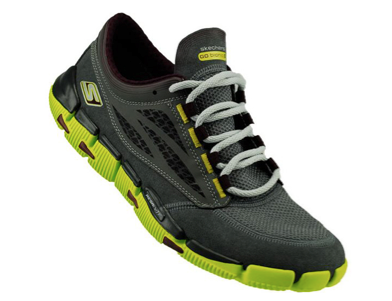
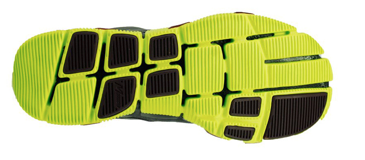
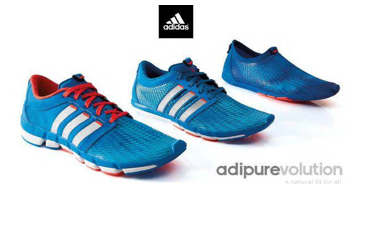
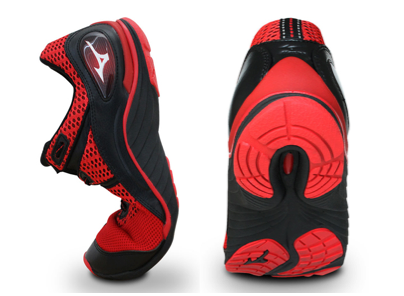

disappointed with adidas leaving that 4mm drop, unless it’s just from an insole…still, 9mm is too thick for me, and barefoot is still #1
but great to see more minimal wear